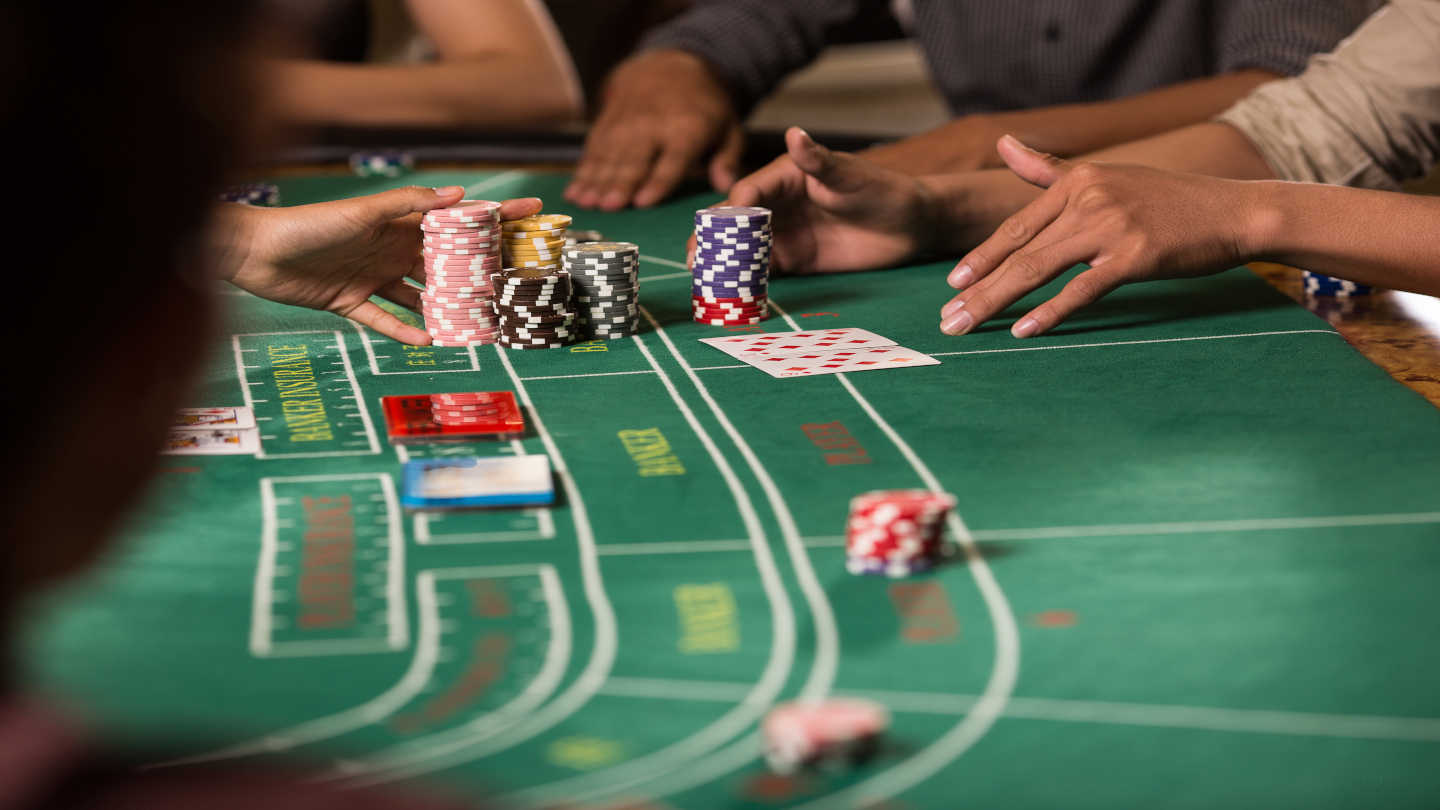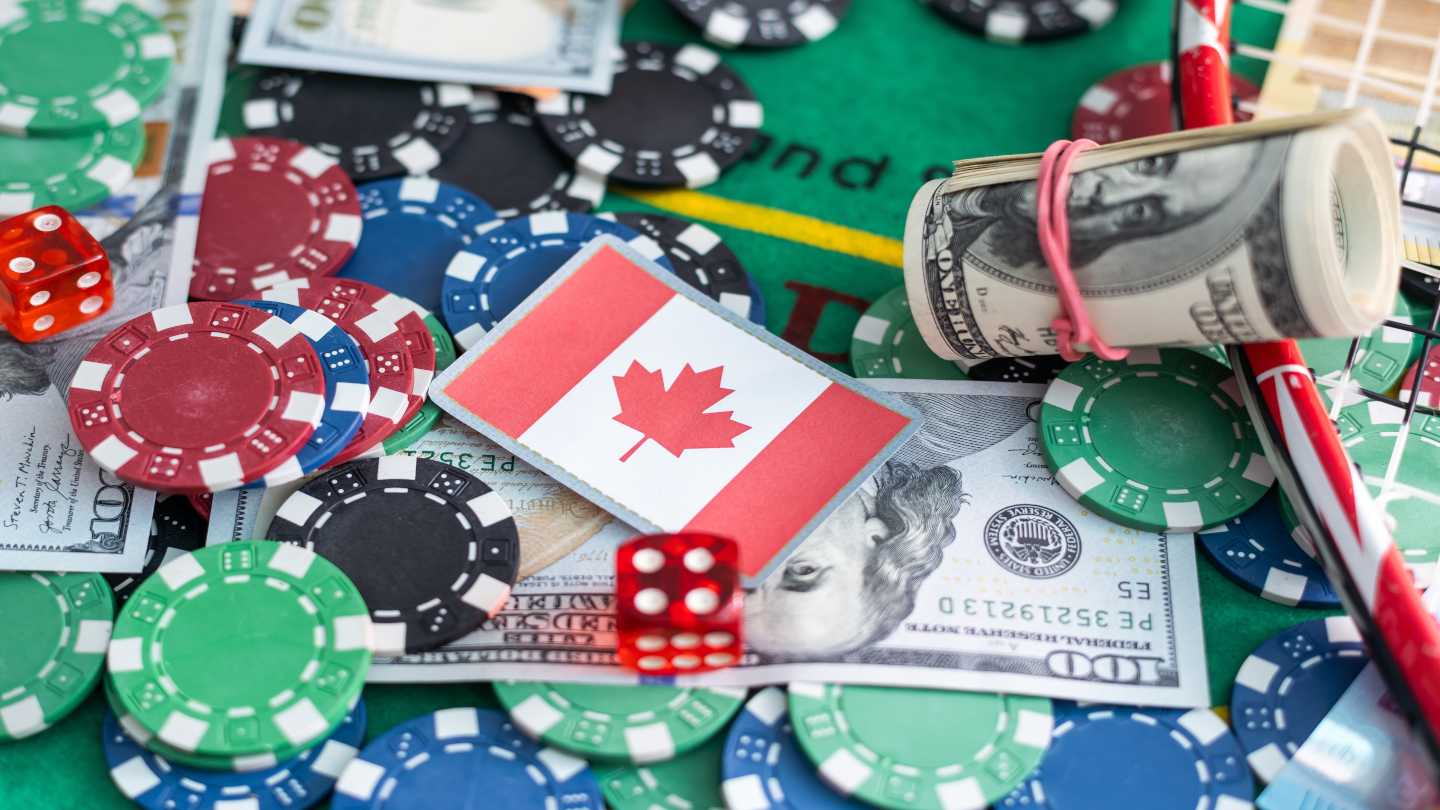How to Play Poker for Dummies – Start Playing Poker Today

18 minutes
Last Updated: May 8, 2022
How to Play Poker for Dummies – Start Playing Poker Today
Poker is the most complex casino game around and one of the most challenging card games to master.
Knowing this, many beginner poker players often get overwhelmed when trying to delve deeper into this world and start playing poker for real money.
If you’re one of those players, you’ve come to the right place.
As the title gives it away, this poker guide is aimed at absolute poker dummies, those who don’t know anything about the game and don’t know where to begin learning.
We’ve filtered all of the unnecessary and complex information you don’t need to know as a beginner and focused on the essentials.
If you want to start playing poker today, read this how-to poker guide for dummies and learn everything you need to know!
Poker for Dummies – The Absolute Basics
So, let’s say that you’re a complete beginner and don’t have a firm grasp on even the fundamental gameplay features of this gambling game.
From this perspective, our guide on poker rules for dummies should start with the absolute basics. With this in mind, here are the main principles of poker:
The Main Goal of Every Game
The main goal of every poker game is to capture the pot and win the money that it contains. To win the pot, you’ll need to have the strongest hand in the game or trick your opponents into thinking that you have a better hand than you really do.

On your way to winning the pot, you’ll have several decisions available to you. These are:
- Check – When you check, you pass on the action to the next player at the table and avoid betting any chips. This option is available only if no one made a bet or raise before you.
- Call – Calling involves accepting the action in the form of the highest bet made at the table to that point.
- Raise – Raising is the action of increasing the size of the previous bet. You can also re-raise, meaning that you’re raising someone else’s raise.
- Fold – If you don’t want to call a bet and continue the round, you can fold. Folding means that you don’t have to risk any more money, but you’re also giving up on the chips you’ve put into the pot up to that point.
In most poker games, you would announce your action verbally to avoid any misunderstandings.
That said, there are also non-verbal signs that you can use to signal your decision. For example, tapping the table in front of you means that you want to check.
If all players but one fold, the player still left in the game is automatically the winner. If there are two or more players left in the game, it goes to the “showdown.”
This is when all of the players remaining in the game reveal their cards. The player with the strongest-ranking hand wins the showdown and takes the pot. After this is completed, a new game begins.
The Betting Rounds in Poker
While guiding you on how to play poker, we’ll primarily focus on two of the most popular poker variations, Texas Hold’em and Omaha poker.
This is because these two versions are the most widespread poker games and have many similar rules.
One of these similarities is also in regards to the betting rounds. To be more precise, here’s a closer rundown of the betting rounds in poker:
- Preflop – The preflop betting round is the first betting round in the game, as it includes bets that the players make before any of the community cards have been dealt.
- Flop – The flop reveals the first three cards, so this betting round is the first one that provides you with useful information on the board on how you should continue the game.
- Turn – The turn reveals the fourth community card, and the turn betting round comes right after this.
- River – The river card is the fifth and last community card on the table, and the river betting round is the last betting round in the game that follows it.
The Standard Poker Deck
Again, in most popular poker variations like Texas Hold’em and Omaha, the standard deck uses 52 cards.
Some poker variations also include one Joker card. In most poker games, the hand rankings go from 2 to A, meaning that the four Ace cards are the highest valued cards in the deck.
In lowball poker games, these card rankings are reversed, with the Ace being the lowest-ranked card.
There are three common card ranking methods in lowball poker games. These are ace-to-five low, deuce-to-seven low, and ace-to-six low, with the first of these three methods being the most used one.
Poker Hand Rankings
Now that you know how an average poker game plays, you should also learn all of the rankings.
This will help you better understand what hands are worth playing and how much money you should be willing to risk depending on the strength of your hand.

In this regard, here are the common poker hand rankings that apply in most poker games:
High Card
A high card ranking scenario is used in situations when no one has at least a pair. In such cases, the player holding the highest-valued card wins the pot.
If two or more players have the same highest-value card, the second highest-valued card is compared, and so on.
Pair
A pair is a hand made up of two cards of the same rank. If two or more players have just one pair, the player with the highest-ranked pair wins the pot.
A pair of Aces is the strongest pair in most poker games. If two players have the same pair, the next highest card is looked at to determine the winner.
Two Pair
A two pair hand contains two cards of the same rank and another two matching cards of a different rank than the first pair. For example, two Aces and two Jacks make up a two pair hand.
Three of a Kind
A three of a kind hand is any hand containing three cards of the same rank. If two or more players have a three of a kind hand, the player with the highest-valued three of a kind wins the pot.
Straight
A straight is a hand made up of five cards of consecutive order. The cards don’t have to be of the same suite.
For example, the 10, J, Q, K, A straight is the strongest straight in poker, regardless of what suit each of the cards is.
Flush
A flush is any hand in which all of the cards are of the same suit. The cards don’t need to be in any particular order.
If more than one player has a flush, the player with the highest-ranked card in the flush wins the pot.
Full House
A full house is a hand made up of three cards of the same rank and two other cards of a different, also matching rank.
For example, a hand consisting of three Kings and two Queens is called a full house.
Four of a Kind
A four of a kind hand is any hand made up of four cards of the same rank. For example, an 8 of clubs, 8 of spades, 8 of hearts, and 8 of diamonds hand is a four of a kind hand. The strongest four of a kind hand is four Aces.
Straight Flush
The second strongest hand in poker, a straight flush, is a hand in which all five cards are in consecutive order and of the same suit.
In other words, this could be any five consecutive cards, except the 10, J, Q, K, A hand, as this is the Royal Flush hand.
Royal Flush
The royal flush is the strongest poker hand, and it can’t be beaten by any other hand in the game. This hand is made up of a 10, J, Q, K, A, all in the same suite. Any suit can make up the royal flush.

Besides learning these poker card rankings, you should also remember that it’s possible for two or more players to have a hand of equal strength.
In these cases, the pot is equally split between them, provided that all of them have wagered the same amount of money.
Poker Positions
While you remain in the same seat when playing poker, your position in the overall order of play changes with each game.
When it comes to this, we can divide the order into three positions. These are early, middle, and late positions.
Each position has its pros and cons, which is something worth learning when you start getting more in-depth.
Poker Chips
Whether you’re playing poker in a live poker room or at home with friends, you can’t argue that poker chips are a big part of the experience.
Here’s an example of the common chips denominations and their colors that you’ll likely find in most poker rooms:
- $1 Chips – White
- $5 Chips – Red
- $10 Chips – Blue
- $25 Chips – Green
- $50 Chips – Orange
- $100 Chips – Black
- $500 Chips – Purple
Keep in mind that there’s no official regulation on what the specific chip denominations and colors need to be.
So, while most casinos and poker rooms will use the standard we’ve listed above, don’t be surprised if you come across chips with entirely different values and colors.

How to Play Poker for Dummies – A Step By Step Guide
So, with everything from above in mind, let’s bring up all of the aspects we’ve talked about together and go over step-by-step how you can play poker.
To make it easier to understand in a real-world example, we’ll use Texas Hold’em to show you how an average hand plays out.
Here’s a step-by-step guide on how to play Texas Hold’em poker for dummies:
1. Place Your Blinds
Every Texas Hold’em game starts with the players placing the blinds. The small blind is usually half the minimum bet in the game, while the big blind is generally equal to the minimum bet.
2. Wait For The Dealer to Deal the Cards
The dealer will deal two hole cards to every active player. They will always deal in the clockwise direction, starting with the player on their left.
After you receive your cards, you can check them, but be careful not to accidentally show them to anyone else at the poker table.
3, Follow the Betting Process
The betting process starts with another betting round. As we’ve gone over above, it will include the preflop, flop, turn, and river.
During each of these betting rounds, you’ll have the option to check, call, raise, or fold, depending on what you find to be the best option for you as you see the game play out.
4. Reveal Your Cards
If you’re not the only player left in the game, the last betting round is followed by the showdown, as we mentioned above.
At this point, you and the rest of the players left in the game turn over your cards. If you don’t think you can win, you can muck your cards and not show them.
Simple Poker Strategies Beginners Can Use
Beginner poker players who are just starting their poker experience shouldn’t burden themselves with too many strategies.
That said, using a few simple poker strategies can help you win more, even as a beginner, without making the overall gameplay overwhelming.
With that in mind, here are a few simple poker tips and strategies every beginner poker player can implement:
Practice Being Aggressive
Most beginners often fall into a pattern of being overly defensive and only calling during later rounds when the possible outcomes are pretty obvious.
Keeping that in mind, we recommend you try being more aggressive, especially if you’re the first person into the pot.
The logic behind this is that starting aggressive gives you control of the pot.
As you’ll have the betting lead right from the get-go, you’ll have a much easier time winning after the flop. Of course, your aggression should be focused and with purpose.
Be Selective With Your Hands
As a beginner poker player, you’ll likely play much more hands than you should. Luckily, this is a fairly easy thing to watch for, especially if you use a useful chart that helps you quickly determine the strength of your hand.
A general rule of thumb is that you should keep your game relatively tight, particularly during preflop.

This often means folding more than three-quarters of the hands you get. It might seem too extreme, but it will protect you from getting into bad situations, which often end up very costly for a beginner.
Don’t Bluff Too Much
Bluffing is an integral part of poker and a very valuable tool to master. That said, beginner poker players often overestimate their bluffing skills and bluff much more often than they should.
Avoid making this mistake and instead just focus on playing your cards right, especially in the first few months of your experience.
Develop Your Mental Game Early On
Besides being a game of sheer skill and strategy, poker is also very mentally demanding. A big part of being a successful poker player is learning how to control your emotions and stay focused for longer periods of time.
While this will certainly be difficult when you’re a beginner, it’s important not to neglect this aspect as you work on other aspects of your game.
Additional General Tips for Poker Beginners
Apart from using the simple strategies we’ve shared above, we also want to highlight a few general aspects that can be very valuable in enriching your poker experience and making you a better player from the get-go.
Given this, here are a few more general tips for poker beginners:
- Learn the Lingo – If you search for the poker glossary online, you’ll see just how many terms this game includes. As a beginner, you don’t need to know all of them, but learning the basic lingo will make your poker experience better, and you’ll be able to communicate with other players more easily.
- Don’t Be The Worst Player At The Table – At the very beginning, you’ll most likely be the worst player at the poker table. That said, you should try to avoid this role as soon as you can by carefully choosing your tables and limits.
- Stay Disciplined – You might not have extensive strategy knowledge or skills in the beginning, but one thing you can establish from the very start is discipline. Staying disciplined will allow you to progress much faster but also help you be a more successful player in the long run.
- Set a Poker Bankroll – The last general poker tip we want to mention is that you should set a poker bankroll right as you start. Having a fixed poker bankroll will help you know how much you’re spending and winning and prevent you from losing more money than you can afford to lose.
Summing It Up – Starting Your Poker Experience
If you took the time to read everything we’ve discussed above in this simple poker guide for dummies, you’ve learned enough to start playing poker.
All that’s left now is to invite your friends to a poker game, go to a nearby casino, or open an account with an online poker platform.
Lastly, we want to tell you that you shouldn’t worry about not knowing everything there is to know when starting out.
This is because knowing everything in poker is nearly impossible, as it’s undoubtedly the most complex casino game.
There’s even a saying: “poker takes five minutes to learn but a lifetime to master.”
Many poker pros are constantly learning and improving the game even after years or decades of experience playing the game.
So, you shouldn’t wait until you know everything and only start playing poker then. Many new players are worried about making mistakes or looking foolish at the table.
The truth is, these situations can happen even to experienced players and are not that serious, to begin with.
The best way to develop a deep understanding of the game is just to play it. Of course, you should start playing low-stakes tables, set a fixed bankroll, and gradually move up as you develop your poker skills.
For this reason, it’s often best for beginners to start playing online poker, as it’s more convenient, and you can more easily find low-stakes tables.
Poker for Dummies – Additional FAQ
How many players can participate in a poker game?
The number of players that can play at the same time primarily depends on the type of poker game. For example, in popular poker variations like Texas Hold’em and Omaha, anywhere from 2 to 10 players can play at the same poker table.
What’s the difference between no-limit and limit poker games?
To put it simply, the main difference between limit and no-limit poker is that in no-limit poker, you can bet or raise as much as your stack allows it.
In comparison, in limit games, you can only bet or raise within the limits of the pre-set amounts for the specific game you’re playing.
What is a blind and ante in poker?
An ante in poker is the initial minimum amount you need to bet in order to participate in the game. Blinds are wagers that you place before any of the cards are dealt.
In most poker variations, there are two types of blinds, the small blind and the big blind.
Are all suits of the same value in poker?
Yes, unlike what you’ll find in some other card games, all four suits are of equal value. Poker is a game that emphasizes the rank of the cards instead of their suits.
What are the most popular types of poker games?
By far the most popular and best-known poker variation is Texas Hold’em poker. It’s followed by Omaha poker in second place.
Other popular types of poker games include 7-card stud, 5-card draw, and 2-7 triple draw.








